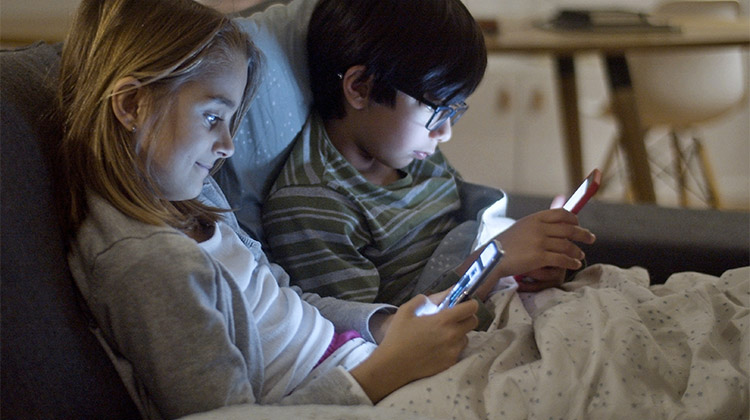Stranger Danger! Equipping Kids for Online Safety

Aussie kids, from kindy through to year eight, play Minecraft and Fortnite, connect on TikTok and Snapchat, and an astounding 96% access YouTube content, according to a recent survey of almost 2500 kids. Their choice of devices include computers, smartphones and game consoles, with tablets used by seven in ten children. Any of these devices are ubiquitous across society and inherently are not considered to be risky.
Positive results indicated that many kids are aware of online dangers and will talk to a parent or adult should they encounter a situation. Kids also responded they were quite (49.7%) or fully confident (34.4%) when they were dealing with online risks.
It’s the prevalent response of the younger children of being ‘slightly or very worried’ around hacking, bullying, lewd content and strangers that signals a need for more online safety awareness and support for kids.
In 2014, a study undertaken in the UK suggested that children who had strict rules applied to their internet and online activities demonstrated lower online confidence than their peers. Fast forward to the 2021 ESET survey and still a worrying 21% of the kids responded they ‘didn’t know’ if anyone had acted in a nasty or harmful way toward them online.
They are already online, so we need to equip them with the tools for confidence and resilience to deal with a situation should it arise.
Risk Vs Harm
Cyberbullying may be a well known issue, but how many adults, let alone kids, know what it truly encapsulates, and the psychological ramifications?
By definition. cyberbullying is the use of digital technology to cause harm to others. It can happen during innocent online activity on social media, in apps and during gaming. Beyond the risk, it’s harmful from the first message.
The difference between cyberbullying and the regular schoolyard stuff is that often there is no escape from cyberbullying. The perpetrators move across apps, platforms and accounts to relentlessly harass the victims. The psychological fallout in many cases doesn’t stop with the victim, and the ripple effect often encompasses families, schools and entire communities regardless of the endgame.
Danger Talk
Outside their informed confidence or perceived competence, as our kids make the most of online engagement, they need to know they cannot avoid potential risks. They need to know about the hackers, predators and cyberbullies.
Parents and adults should have open conversations with kids about their online activities. Ongoing conversations at the dinner table or in the classroom about what kids are doing, playing, what they enjoy and don’t, and who they connect with, opens the dialogue on how to handle the dark side of online experiences.
Educating them about the serious harmful intent of cyberbullies and how to recognise when someone is being harmful will encourage kids to talk about it if they see it or experience it. These difficult conversations are the first line of defence. Normalising these conversations and undertaking them regularly ensures kids have current and relevant information.
It’s Not All Bad
Many experts recommend introducing and exploring the online world together, or allowing them to discover it with supervision. The positive aspects and experiences it can afford our kids for their creativity, fun, social development, education and world exploration as they mature far outweigh the drawbacks.
Encouraging digital skills has been shown to boost online resilience and have a positive effect on constructive online engagement. Young people that deem the internet a positive thing for themselves and society also exhibited adept online self-regulation.
Getting involved with their online activities, showing interest and remaining curious can also bolster online safety for kids. Playing online games with children strengthens emotional connections and can heighten their sense of responsibility to behave respectfully and appropriately. As skills improve and confidence grows, kids can also teach their carers a thing or two as they problem solve and think for themselves.
Risk Vs Reward
Enabling and supporting exploration of the online world affords kids understanding that some risk comes with reward, and even opportunities. In the offline world, kids fall off bikes and hurt themselves before learning to pedal like a pro. The same principle can be applied when teaching our kids about the internet; the benefits they will gain from navigating the online world with confidence and care, over its risks, is the reward.
Open dialogue, shared interest, experience and learning affords trust. Kids will trust they can talk to their significant adults, including teachers, about concerns they have, and feel protected. It will fortify them with understanding, a proffered responsibility and resilience to act appropriately, to report and discuss suspect or bad behaviour they encounter themselves, or when they see others being affected by it.
Dr Jarmila Tomková is a respected psychologist from Slovakia. She has worked at the Research Institute for Child Psychology and Pathopsychology, where she led research teams examining the opportunities and risks of child internet usage. She coordinated the Slovak team of EU Kids Online, a multinational research network. She has also worked as a school psychologist, where she designed and implemented several development and preventative programs, such as Students against Bullying. Jarmila continues to work as a consultant for organisations and schools in the prevention of, and intervention in, negative behaviour such as bullying and hate speech. She also founded and leads the civic association ViaSua, dedicated to supporting the mental health and personal growth of individuals, families and society in general.